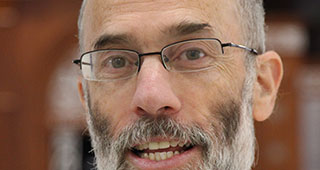Beit Midrash
- Sections
- Chemdat Yamim
- Parashat Hashavua
- Torah Portion and Tanach
- Torah Portion
- Bereshit
The second description of the creation of man tells how he was created from earth, which sounds less like being in Hashem’s image (of course, these represent different elements of one creation, whose description is spread over more than one place). When he later sinned, Hashem connected his punishment of working hard until he died to "until you return to the ground from which you were taken, for you are earth and you will return to earth" (Bereishit 3:19). From that time, man has yearned to repent and return to his more ideal state.
The mixture of animal, vegetable, and mineral life, as found in the second presentation of creation, transpires in an ideal location called the Garden of Eden. There is no need to fix or improve it, just to "work it and preserve it" (ibid. 2:15). The source of evil in that setting is found in the snake or serpent, found in the first presentation under the name tanin. This evil had the potential to step forward as it does here.
We see that in the first presentation, creation screams out for fixing, and man is eminently capable of doing that. In the second presentation, creation is complete, and the one that needs fixing is man, as he is a mixture of a body of earth and a spirit of divine origin, and the question is constantly: which of these wildly different sources will prove dominant?
What happens if man sins? If a perfect man in an imperfect world sins, then he does not have what to rely on for help. Man of the second story has what to rely on even if he falls. His greatness is in his ability to fix himself through teshuva.
Mishlei also speaks about two such people who are called tzaddikim. About one, it says, "a tzaddik is the foundation of the world" (Mishlei 10:25). About the other, it says, "Seven times will a tzaddik fall and get up" (ibid. 24:16). One of them was created on the sixth day, in his natural juncture. The other has him appear after the description of Shabbat, which powered him.
The sons of Yaakov, Yosef and Yehuda, are the prototypes of these tzaddikim. The essence of Yosef is to remain spiritually unscathed despite the difficulties (see Bereishit Rabba 94). Yehuda, on the other hand, sinned, but earned a special place in history for his ability to repent, by admitting his sin, and return.
In kabalistic thought, Yosef represents yesod (foundation), the sixth sefira, putting him higher than the representative of the seventh sefira of malchut, David from the tribe of Yehuda. We will see next week how David relates to number 7.

Parashat Hashavua: How to Ensure a Future of Torah
Rabbi Yossef Carmel | Cheshvan 5786

Parashat Hashavua: The Journey … from Charan to Mt. Moriah and Beyond
Rabbi Yossef Carmel | Cheshvan 5786

Parashat Hashavua: Nitzavim in the Parasha and by Yam Suf
Rabbi Yossef Carmel | Tishrei 5786






















